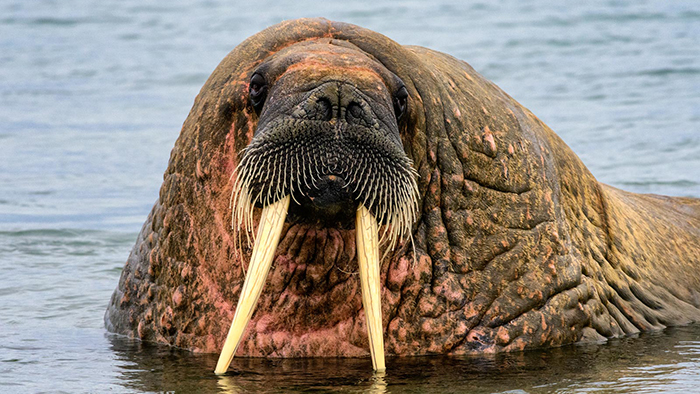Canada’s north is home to some spectacular biodiversity – think Polar Bear, Narwhal, Walrus, Caribou, and a small songbird, the Northern Wheatear, that makes an astonishing 21,000 km migration (one way!) from wintering grounds in sub-Sahara Africa to breeding grounds in the Yukon! Worryingly, much of this biodiversity is at risk from habitat loss and over-harvest. Further, high-latitude regions of the world are among those experiencing the greatest degree of climate change, which is exacerbating declines and may prevent recovery.

Atlantic Walrus (Odobenus osmarus rosmarus). Photo by Allan Hopkins
At the recent COSEWIC (Committee on the Status of Endangered Wildlife in Canada) species assessment meeting in Whitehorse, Yukon (April 22 – April 27), the Eastern Migratory Caribou (Rangifer tarandus) was assessed as Endangered and two populations of Atlantic Walrus (Odobenus osmarus rosmarus) were assessed as Special Concern while a third was assessed as Extinct. While it has been known for millennia that caribou may undergo natural fluctuations in population size, the recent declines in the Eastern Migratory Caribou (as well as other types of caribou) are so severe (up to 99% in some herds) that it is very unclear if they can rebound. The Atlantic Walrus population from Nova Scotia, Newfoundland, and the Gulf of St. Lawrence was driven to extinction by hunting in the mid-1800s, while in areas of Canada’s Eastern Arctic they are now at risk from climate change and disturbance from increasing shipping and industrialization.

Chinook Salmon (Oncorhynchus tshawytscha). Photo by U.S. Geological Survey
A total of 33 wildlife species were assessed at the COSEWIC meeting: from mosses to British Columbia’s interior Okanagan River Chinook Salmon (Oncorhynchus tshawytscha, Endangered, with fewer than 125 spawners, and the only population remaining in the Canadian portion of the Columbia River drainage) to birds, plants, and the enigmatic Ord’s Kangaroo Rat (Dipodomys ordii, also Endangered). The vast majority (25) were assessed as being at some level of risk of extinction (Endangered, Threatened, or Special Concern).
For more information on the results of the assessment meeting see COSEWIC’s press release.
